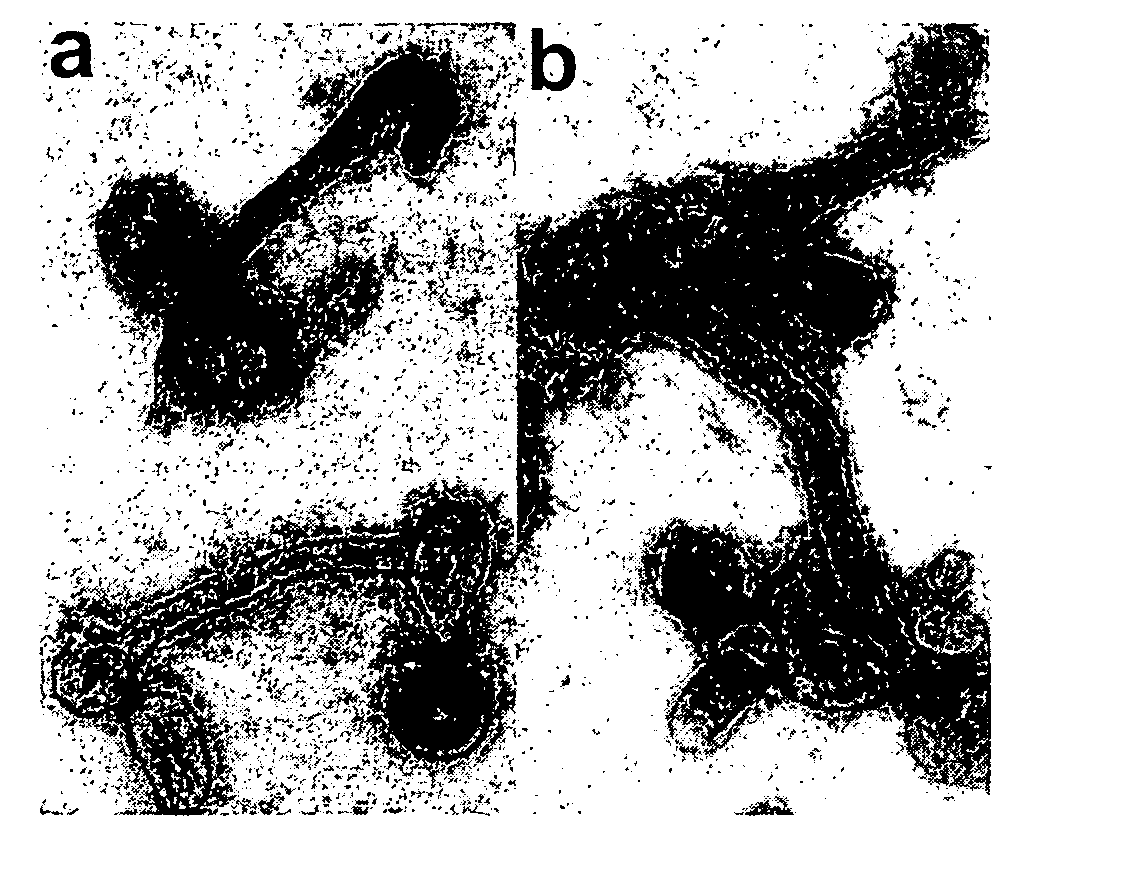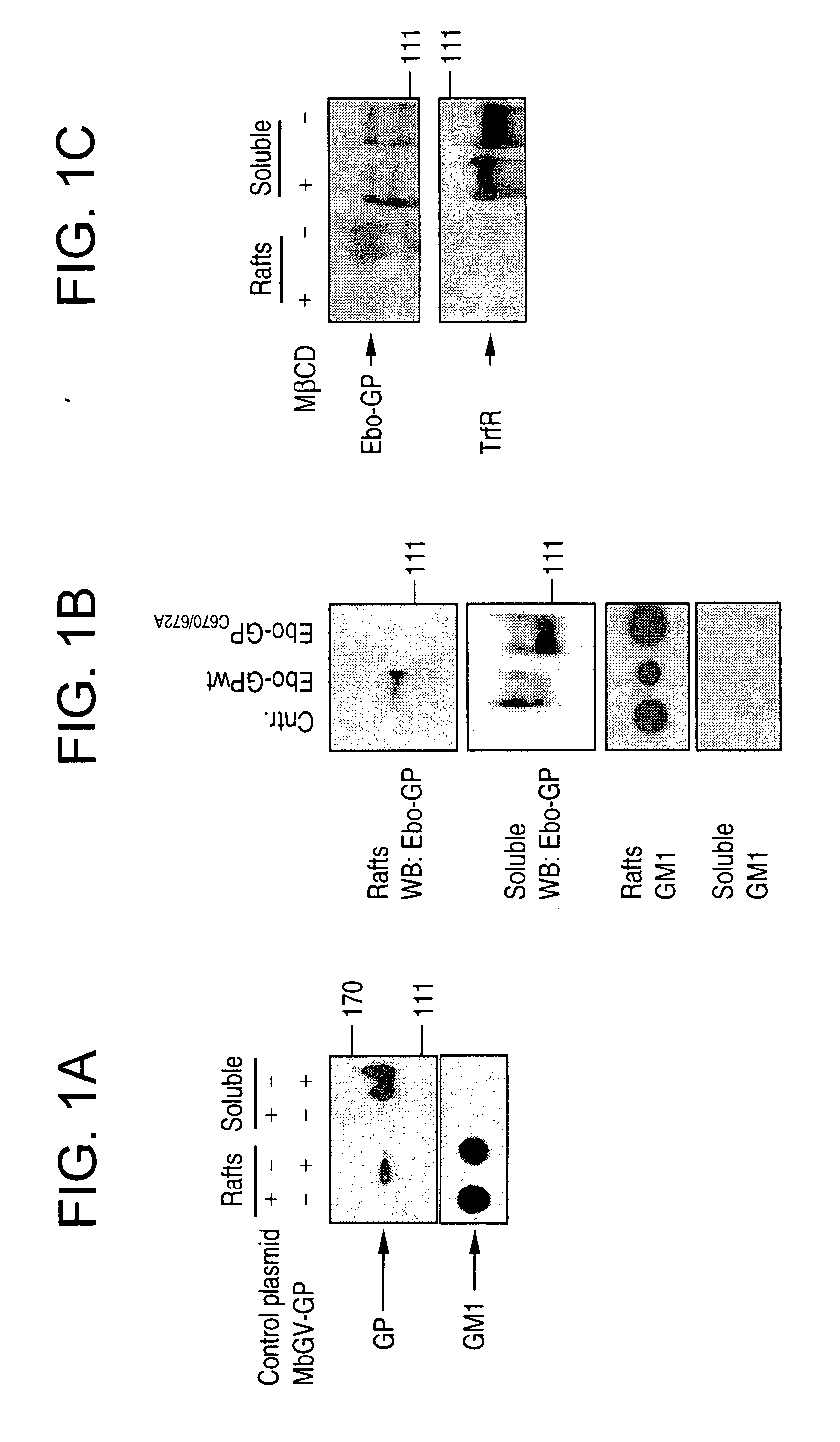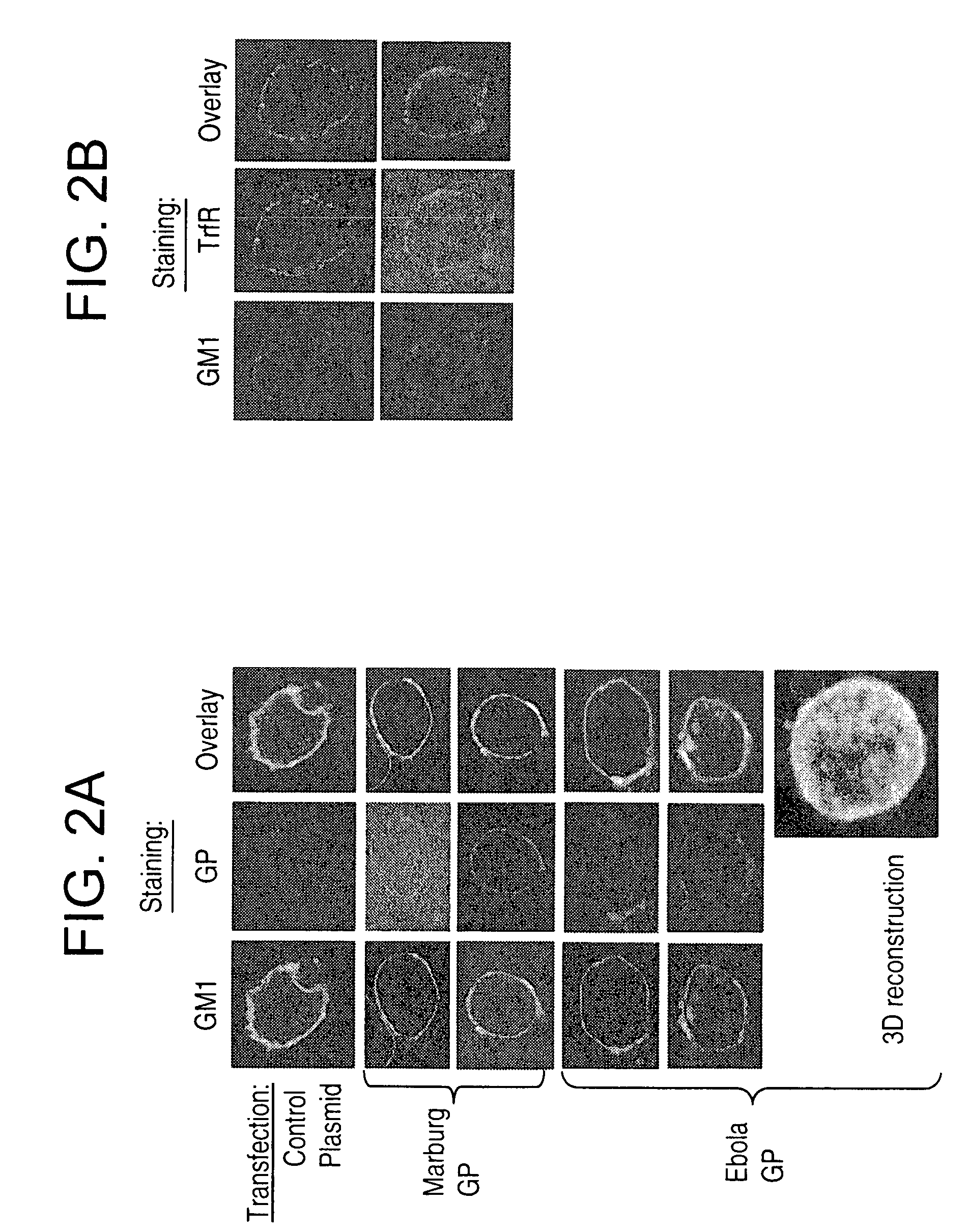Generation of virus-like particles and use as panfilovirus vaccine
a technology of virus-like particles and vaccines, which is applied in the direction of viruses/bacteriophages, antibody medical ingredients, peptide sources, etc., can solve the problems of limited knowledge of the mechanism of pathogenicity, no vaccines or therapeutics available to prevent or treat filovirus infections, and hampered efforts to develop therapeutics against ebola and marburg
- Summary
- Abstract
- Description
- Claims
- Application Information
AI Technical Summary
Benefits of technology
Problems solved by technology
Method used
Image
Examples
example 1
[0100] Association of Filovirus Glycoproteins with Lipid Rafts.
[0101] Targeting of membrane-spanning proteins to lipid rafts is commonly governed by dual acylation of cysteine residues at the cytosolic end of the transmembrane domains (Rousso et al, 2000, supra; Zhang et al., 1998, Immunity 9, 239). The filovirus envelope glycoproteins (GP) contain such acylation signals in their transmembrane domains (Feldmann and Klenk, 1996, supra) and palmitoylation of Ebola GP has been recently reported (Ito et al., 2001, J. virol. 75, 1576). By transient expression of the filovirus envelope glycoproteins in 293T cells and subsequent extraction of rafts by sucrose gradient ultracentrifugation (Aman and Ravichandran, 2000, supra), we examined whether these glycoproteins localize to lipid rafts. As shown in FIG. 1 (A and B), a significant fraction of Ebola and Marburg GPs were found to reside in rafts. In contrast, an Ebola GP, mutated at cysteine residues 670 and 672 (Ebo-GPC670 / 672A), the puta...
example 2
[0102] Filoviral Proteins Associate with Lipid Rafts in Cells Infected with Live Virus.
[0103] Two of the primary target cells of filoviruses are monocyte / macrophages and hepatocytes (Feldman and Klenk, 1996, supra). Thus, to examine the localization of EBOV and MBGV proteins with respect to lipid rafts during infection with live virus, primary human monocytes, HepG2 hepatocytes, and also Vero-E6 cells (commonly used to propagate filoviruses) were used as target cells. Human monocytes were infected with the Musoke strain of MBGV, after 24 h detergent-insoluble and detergent-soluble fractions were separated by centrifugation (Rousso et al., 2000, supra). As shown in FIG. 3A, a major fraction of viral proteins was detected in the detergent-insoluble fraction (I) 24 hours after infection. We then performed similar experiments with HepG2 cells, infected with EBOV-Zaire95 and prepared lipid rafts by sucrose gradient ultracentrifugation. Similar to Marburg, Ebola VP40 and GP were detected...
example 3
[0104] Ebola and Marburg Mirions Incorporate the Raft Molecule GM1 During Budding.
[0105] To determine whether the virus was released through lipid rafts, we analyzed EBOV from culture supernatants of infected cells for the presence of the raft marker GM1. Enveloped viruses bud as virions surrounded by the portion of the plasma membrane at which assembly takes place (Simons and Garoff, 1980, J. Gen. Virol. 50, 1). Release of virions through lipid rafts would therefore result in incorporation of raft-associated molecules in the viral envelope, thus identifying virus budding from the rafts. As shown in FIG. 4A, EBOV immunoprecipitated with anti-Ebola GP antibody from supernatant of infected Vero-E6 cells contained readily detectable levels of GM1. We also analyzed inactivated Marburg virus that had been purified by ultracentrifugation for the incorporation of GM1 and demonstrated that GM1 was detectable in MBGV (FIG. 4B, lower panel). In contrast, the raft-excluded protein TrfR was no...
PUM
| Property | Measurement | Unit |
|---|---|---|
| Volume | aaaaa | aaaaa |
| Volume | aaaaa | aaaaa |
| Volume | aaaaa | aaaaa |
Abstract
Description
Claims
Application Information
 Login to View More
Login to View More - R&D
- Intellectual Property
- Life Sciences
- Materials
- Tech Scout
- Unparalleled Data Quality
- Higher Quality Content
- 60% Fewer Hallucinations
Browse by: Latest US Patents, China's latest patents, Technical Efficacy Thesaurus, Application Domain, Technology Topic, Popular Technical Reports.
© 2025 PatSnap. All rights reserved.Legal|Privacy policy|Modern Slavery Act Transparency Statement|Sitemap|About US| Contact US: help@patsnap.com



